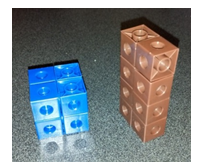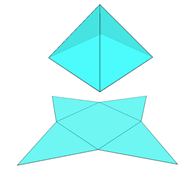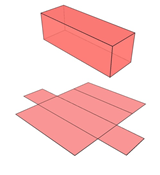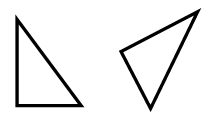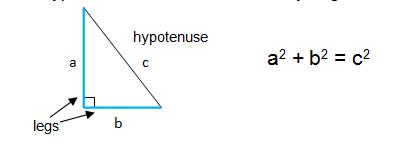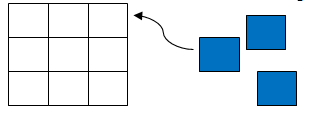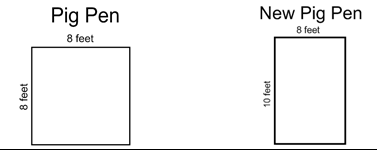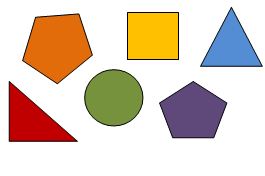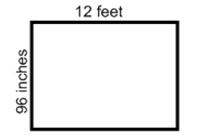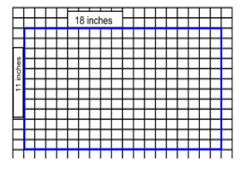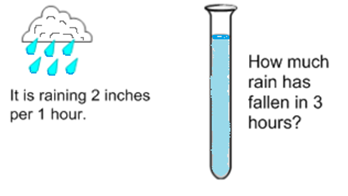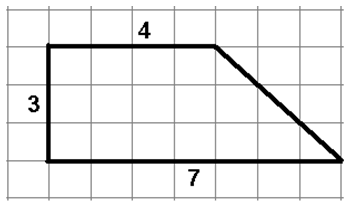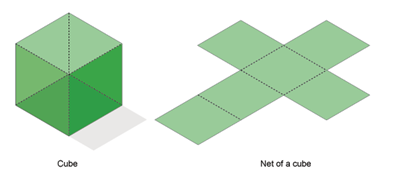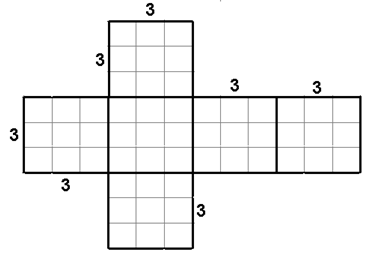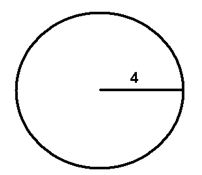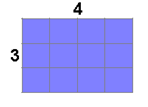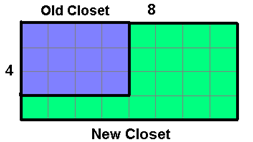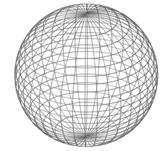Curriculum Resource Guide: Measurement and Geometry
BACK TO Curriculum Resource Guides
Curriculum Resource to Prepare Students for AA-AAS
Mathematics Content: Measurement and Geometry
The purposes of the Curriculum Resource Guides are:
- To provide guidance for teaching the Common Core State Standards (CCSS) to students with Significant Cognitive Disabilities (SWSCD) that both aligns with these standards and provides differentiation for individual student needs
- To serve as a companion document to the Progress Indicators for the CCSS found in the NCSC Learning Progressions
- To help educators build knowledge of the essential content reflected in these Progress Indicators of the CCSS
- To delineate the necessary skills and knowledge students need to acquire to master these indicators
- To provide examples for differentiating instruction for a wide range of SWSCD. These examples can be used in planning specific lessons, alternate assessment items, and professional development.
1a. What is "perimeter" and how is it taught in general education settings?
1a.1 Essential knowledge in this content area
The concept of perimeter refers to the distance around a polygon. (A polygon is a shape which is formed by line segments enclosing an area). The distance can be found by adding the lengths of all sides. Students first begin to explore this concept by laying a ruler around all of the sides of an object and then adding all of the lengths. Students can be encouraged to generalize perimeter into the following equation:
- For rectangles:
-
- For triangles:
- Add all sides or

- Add all sides or
For circles:
- It is called circumference (the distance around a circle). To find circumference students must know: radius (connects the center to any given point on the circle) or diameter (connects two points on the circle and passes through the center).
- The ratio of the circumference to the diameter (
 ) of any circle is the same for all circles. This ratio is called pi, or
) of any circle is the same for all circles. This ratio is called pi, or  . You can use this relationship to find a formula for circumference. Pi (
. You can use this relationship to find a formula for circumference. Pi ( ) is an irrational number that is often approximated by the rational number 3.14.
) is an irrational number that is often approximated by the rational number 3.14.
- The circumference (
 ) of a circle is
) of a circle is  times the diameter (
times the diameter ( ), or
), or  times the radius (
times the radius ( ).
).
-
 OR
OR 
-
1a.2 Common misunderstandings in this content area
Students may have a hard time understanding the dual meaning of the word length. It is not only the distance measured of each line segment, but it also means the longer side of a rectangle (where the width means the shorter side of the rectangle). In addition, once area is introduced students may become confused between area and perimeter. A helpful analogy to use is that perimeter is the "fence" and area is the "lawn."
1a.3 Prior knowledge/skills needed (can be taught concurrently)
- Identify a polygon
- Addition
- Draw or connect line segments that touch end to end to enclose an area
- Multiply by 2
1.b What is "area" and how is it taught in general education settings?
1b.1 Essential knowledge in this content area
The concept of area focuses on determining the amount of space inside of a two-dimensional figure. This is typically done in elementary school with the process of tiling an entire region with a small square piece called a unit square. For example, if we took 1 cm by 1 cm square tiles and covered a rectangle with 6 tiles, we would say that the area of the rectangle is 6 square centimeters.
- *Also provide opportunities for students to decompose rectilinear shapes to determine area.
Students should have ample hands-on experiences with tiles to construct understanding that calculating area is the process of repeatedly tiling a two-dimensional shape with a unit square. Whether the units are centimeters, inches or other measures does not matter, as long as the unit is consistently used to measure an object. As students master understanding of the concept you can teach the following formula to find the area of a rectilinear (composed of right [90⁰] angles) figure:
Area of a circle is more complex. Students can estimate area of a circle by counting squares within, similar to rectangles. The area  of a circle is
of a circle is  times the square of the radius
times the square of the radius  .
.
1b.2 Common misunderstandings in this content area
The most common misunderstanding is confusing the concepts of area and perimeter. The perimeter of a shape is the distance around, while the area is the amount of space inside. If teachers move too quickly to a formula to calculate these two concepts, then students become easily confused.
A composite shape is a flat shape composed of two different sized rectangles. Students must break the shape up into rectangles in order to determine the entire area.
1b.3 Prior knowledge/skills needed (can be taught concurrently)
In general education, the student typically will need to:
- Lay tiles on a surface with no gaps or overlaps
- Count tiles after covering an object
- Draw squares on a piece of grid (graph) paper OR count squares on a piece of paper
- Multiply numbers
- Understand concepts of length and width
1c. What is "volume" and how is it taught in general education settings?
1c.1 Essential knowledge in this content area
Volume is the amount of space a three dimensional (3-D) figure takes up. Examples of 3-D figures that take up space include rectangular prisms, spheres, cubes, cones, cylinders, and pyramids. Students should understand figures that have volume are 3-D rather than flat, two-dimensional (2-D) objects. Rectangular prisms and cubes have three dimensions: length, width, and height. A flat surface of a 3-D figure is a face. An edge is where two faces meet. A vertex is where the figure comes to a point. The base is the shape used to classify the figure. Students should be provided with numerous hands-on opportunities to explore items that take up space and label the attributes of the figures. The units used to measure volume are called cubic units. Previously, students used tiles to measure area, and now they will be using cubes to measure volume. Volume is an extension of area. To determine area, students tiled a flat surface with unit squares. To determine the volume of a rectangular prism or cube, students begin by filling the object with unit cubes. The Common Core State Standards for Math refer to rectangular prisms and cubes as rectilinear shapes, since the shapes are composed of all right angles, and every face can be composed of 1 or more rectangles. Again, whether the units of the cubes are centimeters, inches, or other measures does not matter, as long as the unit is consistently used to measure an object. Students can practice measuring volume by using cubes to make a replica of a given shape and then count the cubes to measure the volume. They can also begin to identify the length, width, and height of the object and its numerical value. As students master understanding of the concept you can teach the following formulas:
- Rectangular Prisms
- The volume of a prism is the area of the base (
 ) [length times width] times the height (
) [length times width] times the height ( ).
).
-

- The volume of a prism is the area of the base (
- Cylinders
- The volume of a cylinder is the area of the base (B) [
 ] times the height (
] times the height ( ).
).
-

- The volume of a cylinder is the area of the base (B) [
- Spheres
- The volume of a sphere is
 times the cube of the radius (
times the cube of the radius ( ).
).
-

- The volume of a sphere is
1c.2 Common misunderstandings in this content area
Students may think that if items have the same volume, they must be the same shapes (i.e., "This square has 8 cubic units of volume, therefore all objects with 8 units of cubic volume are squares.")
1c.3 Prior knowledge/skills needed (can be taught concurrently) In general education, the student typically will need to:
- Identify dimensions of length, width, and height
- Calculating area using a formula
- Count cubes
- Use cubes to fill with no gaps or overlaps
- Experience multiplying numbers
- Understand how to cube a number (e.g., 23)
1d. What is "surface area" and how is it taught in general education settings?
1d.1 Essential knowledge in this content area
Surface area is the sum of all the faces of an object. Students can first learn to add the areas of the faces to find the surface area. Nets will help with this. See: http://illuminations.nctm.org/LessonDetail.aspx?id=L570 for further information and examples. Students should be encouraged to engage in activities using nets to deepen their understanding of surface area (e.g., matching net to corresponding 3-D object).
Then the following formulas can be taught to find the surface area of rectangular prisms, cubes, and square pyramids:
- Rectangular prisms:

- Cubes:

- Square pyramid

1d.2 Common misunderstandings in this content area
Students may believe that they have identified surface area by merely counting all the faces of the object.
1d.3 Prior knowledge/skills needed (can be taught concurrently)
In general education, the student typically will need to:
- Understand the concept of the "face" of objects
- Count the number of "faces" on an object
- Solve equations using order of operations
- Count cubes
- Identify cubes and rectangular prisms
- Understand how to square a number (e.g. 3²)
1e. What is "Classifying and Comparing Figures" and how is it taught in general education settings?
1e.1 Essential knowledge in this content area
Students should learn to identify 2-D and 3-D figures including: rectangles, squares, triangles, trapezoids, quadrilaterals, pentagons, hexagons, triangles, prisms, cones, cylinders, pyramids, cubes, and spheres. Given pattern blocks, students should be able to compose identified figures. They need to know the salient (defining) and non-salient (non-defining) features of figures. For instance, the defining features of rectangles are: they have four sides, they are closed figures (all lines touch end to end), opposite ends are parallel, and all four angles enclosed are right angles. Non-defining features of a rectangle would be its size, color, or orientation. Knowing the defining features of figures will enable students to compare figures based on attributes. Attributes of figures students will need to know include:
- Recognize different types of angles:
- Understand parallelism and perpendicularity
Students need to understand congruency. Figures that are congruent have the same shape and size.
Once students understand defining attributes, given the following shapes students should be able to classify them by number of angles, number of sides, number of angles which are greater than ninety degrees, tell whether the shapes are congruent, identify which shape is a quadrilateral, etc.
1e.2 Common misunderstandings in this content area
Students may learn the label of a figure such as "square" and when asked if it is a quadrilateral say "no." However, since the definition of a quadrilateral figure is that it has four sides then a square is a quadrilateral. Therefore students will need practice sorting shapes into categories. Also, students may have difficulty determining whether shapes are congruent when they are rotated (see example on previous page) and may need repeated practice with determining congruency of shapes with various rotations.
1e.3 Prior knowledge/skills needed (can be taught concurrently)
- Label 2-D and 3-D figures based on attributes (e.g., triangle, pyramid)
- Count (number of angles, sides, etc.)
- Understand same and different
1f. What is "Converting Units of Measurement" and how is it taught in general education settings?
1f.1 Essential knowledge in this content area
In order to be able to convert measurements, students will need to understand that objects can be measured to find length, weight, and capacity (of liquids). Students should know the units of measurement and the relationship between units of measurement in the same system. For example:
| Length | |||
| U.S. Unit | Equivalent | Metric Unit | Equivalent |
| 1 foot (ft) | 12 inches (in) | 1 centimeter (cm) | 10 millimeters (mm) |
| 1 yard (yd) | 3 feet (ft) | 1 meter (m) | 100 centimeters (cm) |
| 1 mile (mi) | 1,760 yards (yd) | 1 kilometer (km) | 1,000 meters (m) |
1f.2 Common misunderstandings in this content area
Students may find converting standard measures particularly difficult because: (a) the number to multiply or divide to convert will vary based on the given unit (e.g., feet to inches, multiply by 12; yards to feet, multiply by 3); (b) if the conversion does not equal an exact whole number unit of measurement then students may need to combine two units to provide the answer (e.g., 5 feet, 11 inches) [This is only true with standard measure, with metric measurements decimals may be used.]; and (c) If conversions are more than one unit removed students will be required to perform multiple steps to find the correct amount (e.g., if converting weeks to minutes, students must convert weeks to days, then days to hours, finally hours to minutes).
1f.3 Prior knowledge/skills needed (can be taught concurrently)
- Knowledge of both metric and standard units of measurement
- Knowledge of measurement units for length, volume, mass, time
- Knowledge of equivalents (e.g., 1 foot = 12 inches)
- Students can be provided with a conversion chart if needed
- Multiplication and division
- Number identification
- Use of measurement tools (i.e., line up a ruler's edge to the edge of the object being measured)
- Knowledge of fractions and decimals
1g.What is "Pythagorean Theorem" and how is it taught in general education settings?
1g.1 Essential knowledge in this content area
Right triangles have 1 right angle and 2 acute angles. The side opposite the right angle is called the hypotenuse and the other two sides are called legs. In any right triangle, the sum of the squares of the lengths of the two legs is equal to the square of the length of the hypotenuse – this is called the Pythagorean Theorem.
Below is a visual model of the concept of the Pythagorean theorem where the length of a = 3, b = 4, c = 5.
1g.2 Common misunderstandings in this content area
Students may forget to use squares to determine length of sides (e.g., compute a + b to find c instead of a2 + b2 to find c2). In addition, students may overgeneralize if not given enough practice examples. For example, if given an example such as 32 + 42 = 52, student may think that 62 + 72 = 82.
1g.3 Prior knowledge/skills needed (can be taught concurrently)
- Identify right triangles
- Number identification
- Multiplication and Division
- Knowledge of exponents, specifically squaring (x2) and finding the square root

2. What are some of the types of activities general educators will use to teach this skill?
2.1 Activities from General Education Resources
(CCR & Standards for Mathematical Practice Reference Table)
-
 6 Trace around a book and estimate then measure the perimeter of the book first with paper clips, then toothpicks, then inches.
6 Trace around a book and estimate then measure the perimeter of the book first with paper clips, then toothpicks, then inches.
-
 4 On centimeter grid paper, draw and label a rectangle with a length of 6 centimeters and a width of 2 centimeters. Find the perimeter of this rectangle. Now find the perimeter of the following rectangles (l=12, w=4; l=18, w=6; l=24, w=8). Make a conjecture: How is the perimeter affected if the length and width are changed proportionally?
4 On centimeter grid paper, draw and label a rectangle with a length of 6 centimeters and a width of 2 centimeters. Find the perimeter of this rectangle. Now find the perimeter of the following rectangles (l=12, w=4; l=18, w=6; l=24, w=8). Make a conjecture: How is the perimeter affected if the length and width are changed proportionally?
-
 1
1  4 Given a choice of classroom objects, choose an object, determine which tool is needed to measure perimeter, indicate the formula needed to determine perimeter, then find the perimeter.
4 Given a choice of classroom objects, choose an object, determine which tool is needed to measure perimeter, indicate the formula needed to determine perimeter, then find the perimeter.
-
 5 On a map with a scale, lay a string around the state of Florida. Mark the string where it meets itself. Use a ruler to measure the string in centimeters. Use the map scale to estimate the perimeter in miles.
5 On a map with a scale, lay a string around the state of Florida. Mark the string where it meets itself. Use a ruler to measure the string in centimeters. Use the map scale to estimate the perimeter in miles.
-
 6 On 1-inch graph paper, trace around your shoe. Count the number of whole square units covered by the shoe. Count two partially covered squares as one unit. What is the area of the bottom of your shoe?
6 On 1-inch graph paper, trace around your shoe. Count the number of whole square units covered by the shoe. Count two partially covered squares as one unit. What is the area of the bottom of your shoe?
-
 4 Using a geoboard and a rubber band find the area of a variety of shapes.
4 Using a geoboard and a rubber band find the area of a variety of shapes.
-
 4 On grid paper, draw then cut out a rectangle. Cut a triangle from one side of the rectangle and move it to the other side to form a parallelogram. How does a parallelogram relate to a rectangle? What part of the parallelogram corresponds to the length of the rectangle? What part corresponds to the rectangle's width? Make a conjecture: What is the formula for the area of a parallelogram?
4 On grid paper, draw then cut out a rectangle. Cut a triangle from one side of the rectangle and move it to the other side to form a parallelogram. How does a parallelogram relate to a rectangle? What part of the parallelogram corresponds to the length of the rectangle? What part corresponds to the rectangle's width? Make a conjecture: What is the formula for the area of a parallelogram?
-
 1
1  4 A gardener has 24 feet of fencing for a garden. What are the dimensions of the rectangle that will enclose the greatest area? (Provide 24 paperclips to represent the 24 feet of fencing.)
4 A gardener has 24 feet of fencing for a garden. What are the dimensions of the rectangle that will enclose the greatest area? (Provide 24 paperclips to represent the 24 feet of fencing.)
-
 3 Using a small box and unit cubes, first estimate how many cubes it will take to fill the box. Then place the cubes in the box and count them to determine the volume. Now use the cubes to build a figure. Is the volume the same even though the shape is different? Why or why not?
3 Using a small box and unit cubes, first estimate how many cubes it will take to fill the box. Then place the cubes in the box and count them to determine the volume. Now use the cubes to build a figure. Is the volume the same even though the shape is different? Why or why not?
-
 7 Using centimeter cubes, build five different prisms. For each prism, record the dimensions and the number of cubes used (\# of cubes, height, length of base, width of base, area of base). Examine the rows of the table. What patterns do you notice? Describe the relationship between the number of cubes needed and the dimensions of the prism.
7 Using centimeter cubes, build five different prisms. For each prism, record the dimensions and the number of cubes used (\# of cubes, height, length of base, width of base, area of base). Examine the rows of the table. What patterns do you notice? Describe the relationship between the number of cubes needed and the dimensions of the prism.
2.2 Links Across Content Areas
-
 5 In geography or world history, students may need to apply measurement skills with maps to determine distance between locations.
5 In geography or world history, students may need to apply measurement skills with maps to determine distance between locations.
-
 5 Science requires a variety of measurement and geometry skills such as:
5 Science requires a variety of measurement and geometry skills such as:
- Measuring out certain volumes to conduct chemistry experiments
- Finding the mass of organs when dissecting various organisms
- Determining the rate of water evaporation when the surface of the water has a large area versus a small area
- Determining whether the attributes of a figure impact its velocity
3. What Connectors to the Common Core Standards Are Addressed in Teaching "Measurement and Geometry"?
Link Core Content Connectors for the Common Core State Standards This guide is not intended to comprehensively cover all of the CCCs related to this topic. For further information on CCCs listed see Core Content Modules and General Education Resources listed in section 3 of this guide.
| Grade Differentiation | Core Content Connectors | Common Core State Standards |
| 3rd grade | 3.ME.1a1 Tell time to the nearest 5 minutes using a digital clock | 2.MD.7 |
| 3.ME.1a2 Solve word problems involving the addition and subtraction of time intervals of whole hours or within an hour (whole hours: 5:00 to 8:00, within hours: 7:15 to 7:45) this one can go with whole number topic | 3.MD.1 | |
| 3.ME.1d1 Use tiling and addition to determine area | 3.MD.7a | |
| 3.ME1d2 Measure area of rectangles by counting squares | 3.MD.6 | |
| 3.ME.1f1 Select appropriate units for measurement (liquid volume, area, time, money) | 3.MD.2 | |
| 3.ME.1f2 Add to solve one step word problems | 3.MD.2 | |
| 3.ME.1g1 Identify a figure as getting larger or smaller when the dimensions of the figure changes | ||
| 3.ME.2e1 Select appropriate tool for measurement: liquid volume, area, time, money | 3.MD.2 | |
| 3.ME.2e2 Generate measurement data by measuring lengths using rulers marked with halves and fourths of an inch | 3.MD.4 | |
| 3.ME.2e3 Measure to solve problems using number lines and ruler to 1 inch, ½ inch, or ¼ of an inch | 3.MD.4 | |
| 3.ME.2h1 Use addition to find the perimeter of a rectangle | 3.MD.8 | |
| 3.ME.2i1 Estimate liquid volume | 3.MD.2 | |
| 3.GM.1h1 Identify shared attributes of shapes | 3.G.1 | |
| 3.GM.1i1 Partition rectangles into equal parts with equal area | 3.G.2 | |
| 4th grade | 4.ME.1d3 Use tiling and multiplication to determine area | 3.MD.7a |
| 4.ME.1f3 Select appropriate units for measurement: mass, length, angles | 4.MD.2, 4.MD.3 | |
| 4.ME.1f4 Select appropriate units for the value of a set of coins or dollars | 4.MD.6 | |
| 4.ME.1g2 Solve word problems using perimeter and area where changes occur to the deminsions of a figure | 4.MD.6 | |
| 4.ME.2e4 Select appropriate tool for measurement: mass, length, angles | 4.MD.6 | |
| 4.ME.2e5 Construct a given angle | 4.MD.1 | |
| 4.ME.2e6 Measure right angles using a tool (e.g., angle ruler, protractor) | 3.MD.2 | |
| 4.ME.2f1 Complete a conversion table for length and mass within a single system | 3.MD.7a, 3.MD.8, 4.MD.3 | |
| 4.ME.2g1 Determine whether a situation calls for a precise measurement or an estimation (distance, volume, mass, time, money) | 4.G.2 | |
| 4.ME.2h1 Apply the formulas for area and perimeter to solve real world problems | 4.G.1 | |
| 4.GM.1h2 Classify two--dimensional shapes based on attributes (# of angles) | 4.G.1 | |
| 4.GM.1j1 Recognize a point, line and line segment, rays in two-dimensional figures | 4.G.1 | |
| 4.GM.1j2 Recognize perpendicular and parallel lines in two-dimensional figure | 4.G.2 | |
| 4.GM.1j3 Recognize an angle in two-dimensional figures | ||
| 4.GM.1j4 Categorize angles as right, acute, or obtuse | 4.G.3 | |
| 4.GM.1k1 Recognize a line of symmetry in a figure | ||
| 5th grade | 5.ME.1a1 Identfy the appropriate units of measurement for different purposes in a real life context (e.g., measure a wall using feet, not inches) | 4.MD.1 |
| 5.ME.1b1 Convert measurements of time | 5.MD.1 | |
| 5.ME.1b2 Convert standard measurements of length | 5.MD.1 | |
| 5.ME.1b3 Convert standard measurements of mass | 5.MD.1 | |
| 5.ME.1d4 Use filling and multiplication to determine volume | 5.MD.4 | |
| 5.ME.2a1 Solve problems involving conversions of standard measurement units when finding area, volume, time lapse, or mass | 5.MD.1 | |
| 5.ME.2b1 Apply formula to solve one step problems involving volume | 5.MD.5b | |
| 5.GM.1j1 Recognize parallel and perpendicular lines within the context of two-dimensional figures | 4.G.1 | |
| 5.GM.1a1 Recognize properties of simple plane figures | 5.G.3 | |
| 5.GM.1b1 Distinguish plane figures by their properties | 5.G.4 | |
| 5.GM.1c1 Locate the x and y axis on a graph | 5.G.1 | |
| 5.GM.1c2 Locate points on a graph | 5.G.1 | |
| 5.GM.1c3 Use order pairs to graph given points | 5.G.1 | |
| 6th grade | 6.ME.1a2 Identfy the appropriate formula (i.e., perimeter, area, volume) to use when measureing for different purposes in a real life context | 6.G.1, 6.G.2 |
| 6.ME.1b5 Complete a conversion table for length, mass, time, volume | 6.RP.3d | |
| 6.ME.1b6 Analyze table to answer questions | 6.RP.3d | |
| 6.ME.1c1 Find the area of a 2-dimensional figure and the volume of a 3-dimensional figure | 6.G.2 | |
| 6.ME.2a3 Apply the formula to find the area of triangles | 6.RP.3b | |
| 6.ME.2b2 Decompose complex shapes (polygon, trapezoid, pentagon) into simple shapes (rectangles, squares, triangles) to measure area | 5.MD.5a | |
| 6.ME.2b3 Decompose complex 3-D shapes into simple 3-D shapes to measure volume | 5.G.1 | |
| 6.GM.1c4 Locate points on a graph | 5.G.1 | |
| 6.GM.1c5 Use order pairs to graph given points | 5.G.2 | |
| 6.GM.1c6 Find coordinate values of points in the context of a situation | 6.G.3 | |
| 6.GM.1c7 Use coordinate points to draw polygons | 6.G.3 | |
| 6.GM.1c8 Use coordinate points to find the side lengths of polygons that are horizontal or vertical | 6.G.1 | |
| 6.GM.1d1 Find area of quadrilaterals | 6.G.1 | |
| 6.GM.1d2 Find area of triangles | 6.G.1 | |
| 7th grade | 7.ME.1d Solve problems that use proportional reasoning with ratios of length and area | 7.G.1 |
| 7.ME.2c1 Solve one step real world measurement problems involving area, volume, or surface area of two- and three-dimensional objects | not addressed | |
| 7.ME2d1 Apply formula to measure area and circumference of circles | 7.G.4 | |
| 7.ME2e1 Solve one step real world problems related to scaling | 7.G.1 | |
| 7.ME2e2 Solve one step problems involving unit rates associated with ratios of fractions | 7.RP.1 | |
| 7.GM.1e1 Construct or draw plane figures using properties | 7.G.2 | |
| 7.GM.1h1 Add the area of each face of a prism to find surface area of three dimensional objects | 7.G.6 | |
| 7.GM.1h2 Find the surface area of three-dimensional figures using nets of rectangles or triangles | 6.G.4 | |
| 7.GM.1h3 Find area of plane figures and surface area of solid figures (quadrilaterals) | 7.G.6 | |
| 7.GM.1h4 Find area of an equilateral, isosceles, and scalene triangle | 7.G.6 | |
| 8th grade | 8.ME.1e1 Describe the changes in surface area, area, and volume when the figure is changed in some way (e.g., scale drawings) | 8.G.4 |
| 8.ME.1e2 Compare area and volume of similar figures | 8.G.4 | |
| 8.ME2d2 Apply the formula to find the volume of 3 dimensional shapes (i.e., cubes, spheres, and cylinders) | 8.G.9 | |
| 8.ME.2f1 Apply the Pythagorean theorem to determine lengths/distances in real-world situations | 8.G.7 | |
| 8.GM.1f1 Recognize a rotation, reflection, or translation of a figure | 8.G.1 | |
| 8.GM.1f2 Identify a rotation, reflection, or translation of a plane figure when given coordinates | 8.G.3 | |
| 8.GM.1g Recognize congruent and similar figures | 8.G.4 | |
| 8.GM.1i1 Identify supplementary angles | 7.G.5 | |
| 8.GM.1i2 Identify complimentary angles | 7.G.5 | |
| 8.GM.1i3 Identify adjacent angles | 7.G.5 | |
| 8.GM.1i4 Use angle relationships to find the value of a missing angle | 7.G.5, 8.G.5 | |
| 8.GM.1j1 Find the hypotenuse of a two-dimensional right triangle (Pythagorean Theorem) | 8.G.7 | |
| 8.GM.1j2 Find the missing side lengths of a two-dimensional right triangle (Pythagorean Theorem) | 8.G.7 | |
| Grades 9-12 | H.ME.1a1 Determine the necessary unit(s) to use to solve real world problems | N.Q 1 |
| H.ME.1a2 Solve real world problems involving units of measurement | N.Q.1 | |
| H.ME.1b1 Describe the relationship between the attributes of a figure and the changes in the area or volume when 1 attribute is changed | G.MG.1 | |
| H.ME.1b2 Solve a linear equation to find a missing attribute given the area, surface area, or volume and the other attribute | A.REI.3 | |
| H.ME.2a1 Describe the accuracy of measurement when reporting quantity (you can lessen your limitations by measuring precisely) | N.Q.3 | |
| H.ME.2b1 Determine the dimensions of a figure after dilation | G.SRT.1 | |
| H.ME.2b2 Determine if 2 figures are similar | G.SRT.2 | |
| H.ME.2b3 Describe or select why two figures are or are not similar | G.SRT.2 | |
| H.ME.2b4 Apply the formula to the area of a sector (e.g., area of a slice of pie) | G.C.5 | |
| H.ME.2b5 Apply the formula of geometric figures to solve design problems (e.g., designing an object or structure to satisfy physical restraints or minimize cost) | G.MG.3 | |
| H.GM.1a1 Find the hypotenuse of a two-dimensional right triangle (Pythagorean Theorem) | 8.G.7 | |
| H.GM.1a2 Find the missing side lengths of a two-dimensional right triangle (Pythagorean Theorem) | 8.G.7 | |
| H.GM.1b1 Use definitions to demonstrate congruency and similarity in figures | G.CO.7, G.SRT.2, 8.G.2 | |
| H.GM.1c1 Construct, draw or recognize a figure after its rotation, reflection, or translation | G.CO.3, G.CO.5 | |
| H.GM.1d1 Use the reflections, rotations, or translations in the coordinate plane to solve problems with right angles | 8.G.1, G.SRT.2 | |
| H.GM.1e1 make formal geometric constructions with a variety of tools and methods | G.CO.12 |
4. What are Some Additional Activities That Can Promote Use of this Academic Concept in Real World Contexts?
-
 1
1 4 How many feet of wallpaper border are needed for a bedroom wall that is 11 feet long and 9 feet wide?
4 How many feet of wallpaper border are needed for a bedroom wall that is 11 feet long and 9 feet wide? -
 1
1 4 Mr. Cruz wants to get the best deal. Which freezer has the most cubic feet for the least amount of money? Freezer A has 25 cubic feet and costs $20 dollars per cubic foot. Freezer B has 16 cubic feet and costs $25 dollars per cubic foot.
4 Mr. Cruz wants to get the best deal. Which freezer has the most cubic feet for the least amount of money? Freezer A has 25 cubic feet and costs $20 dollars per cubic foot. Freezer B has 16 cubic feet and costs $25 dollars per cubic foot. -
 1
1 4 A house has a roof with the dimensions of 42ft by 24ft. If plywood comes in pieces that measure 8 feet by 4 feet, how many pieces of plywood are needed to cover the roof?
4 A house has a roof with the dimensions of 42ft by 24ft. If plywood comes in pieces that measure 8 feet by 4 feet, how many pieces of plywood are needed to cover the roof? -
 1
1 4 If you have a plot of land, how many feet of fencing would it take to enclose it? How much corn could you plant on it?
4 If you have a plot of land, how many feet of fencing would it take to enclose it? How much corn could you plant on it? -
 1
1 4 Brenda wants to paint her room. It measures 14 feet x 16 feet x 10 feet. One gallon of paint costs $20 and covers 250 square feet. The paint is sold only in 1 gallon cans. How much will it cost to paint the room?
4 Brenda wants to paint her room. It measures 14 feet x 16 feet x 10 feet. One gallon of paint costs $20 and covers 250 square feet. The paint is sold only in 1 gallon cans. How much will it cost to paint the room? -
 1
1 4 Mr. Lee wants to build a sandbox 5 feet long, 4 feet wide, and ½ foot high. What length of 6 inch boards will he need to surround the sandbox? How much of his yard will the sandbox cover? How much sand will he need to fill the sandbox? (First decide what you need to know, and then put your information into the formula and do the calculations.)
4 Mr. Lee wants to build a sandbox 5 feet long, 4 feet wide, and ½ foot high. What length of 6 inch boards will he need to surround the sandbox? How much of his yard will the sandbox cover? How much sand will he need to fill the sandbox? (First decide what you need to know, and then put your information into the formula and do the calculations.) -
 1
1 4 How many square yards of carpet are needed to carpet a room that is 15ft by 25ft?
4 How many square yards of carpet are needed to carpet a room that is 15ft by 25ft?
-
 1
1 4 You have a part-time job at a school. You need to buy enough grass seed to cover the school's soccer field. The field is 50 yards wide and 100 yards long. One bag will cover 5000 square feet. How many bags do you need?
4 You have a part-time job at a school. You need to buy enough grass seed to cover the school's soccer field. The field is 50 yards wide and 100 yards long. One bag will cover 5000 square feet. How many bags do you need?
5. How Can I Further Promote College and Career Readiness when Teaching "Measurement and Geometry"?
Ideas for Promoting Career/ College Ready Outcomes
Communicative competence: Students will increase their vocabulary to include concepts related to "measurement and geometry." In addition, they will be learning concepts such as: "around", "on", "in", "how many", "how much", "same", and "different."
Fluency in reading, writing, and math: Students will have opportunities to increase their numeracy and sight word fluency while participating in problem solving related to "perimeter, area, volume, and surface area" such as number recognition, counting, one-to-one correspondence, and reading concepts that include the use and understanding of prepositions.
Age appropriate social skills: Students will engage in peer groups to solve problems related to "measurement and geometry" that will provide practice on increasing reciprocal communication and age appropriate social interactions. For example, students might work together with their peers to find the surface area of a present to determine the amount of wrapping paper needed to cover it.
Independent work behaviors: By solving real life problems related to "measurement and geometry" students will improve work behaviors that could lead to employment such as landscaping, packaging, construction, and painting. When providing opportunities for real life problems leave some materials out and prompt/teach the students to determine who they should ask and what they should ask for to be able to solve the problem.
Skills in accessing support systems: At times, students will need to ask for assistance to complete activities related to "measurement and geometry" which will give them practice in accessing supports. Students will gain practice asking for tools such as talking calculators or a digital tape measure. They can ask a peer to complete the physical movements of the tasks they are not able to do themselves. Be sure to teach students to ask versus having items or supports automatically given to them.
6. How Do I Make Instruction on "Measurement and Geometry" Accessible to ALL the Students I Teach?
6.1 Teach Prerequisites and Basic Measurement and Geometry Skills Concurrently: Remember that students can continue to learn basic numeracy skills in the context of this grade level content.
Basic numeracy skills that can be worked on as a part of a lesson relating to perimeter, area, volume, and surface area:
- identify the figures: circle, rectangle, or triangle; then find the area, circumference or perimeter
- classify figures as 2- or 3-dimensional
- identify numbers while working with them in context of measurement and geometry
- identify the number of sides or faces of 2-D and 3-D figures
- count tiles, cubes, lines, and other units of measure
- learn to match numbers and symbols (=, +, \*) to put an equation into a calculator while computing measurement and geometry equations
6.2 Incorporate Universal Design for Learning (UDL) in planning, and provide for additional Differentiated Instruction when Teaching Measurement and Geometry
| Some examples of options for teaching Measurement and Geometry to students who may present instructional challenges due to: | ||||
| Sensory Differences such as Blindness, Visual Impairment, Deafness, or
Deaf/Blindness |
Physical Disability or Motor Differences (such as weakness or motor planning difficulty) | Extremely limited evidence of experience/ skill or motivation/ attention. | Lack of or extremely limited use of speech. | |
| Options for Representation | Provide auditory options:
Provide tactile options:
Provide visual and manipulative options to scaffold representation of concepts:
|
Reduce Physical Effort :
|
Illustrate through multiple media:
Interactive 3-D shapes http://www.learner.org/interactives/geometry/ Illuminations http://illuminations.nctm.org/ActivitySearch.aspx Math Open Reference http://www.mathopenref.com/ There are many resources listed here: http://www.udlcenter.org/implementation/examples
|
Provide customized display of information:
|
| Options for Expression | Vary the methods for response by:
|
Provide options for responses/expression:
Optimize access to tools/ alternatives for responding:
|
Provide multimedia options for responses/expression:
|
Provide options for modes of communication:
|
| Options for Engagement | Recruit interest by providing choices:
Increase personal relevance:
Provide tactile options for engagement:
|
Recruit interest by increasing personal relevance:
|
Recruit interest by providing choices:
Provide options for sustaining effort and persistence:
Increase personal relevance:
|
Recruit interest with modes of communication:
|
CCR & Standards for Mathematical Practice Table
| Promoting Career and College Readiness | Standards for Mathematical Practice |
| | |







